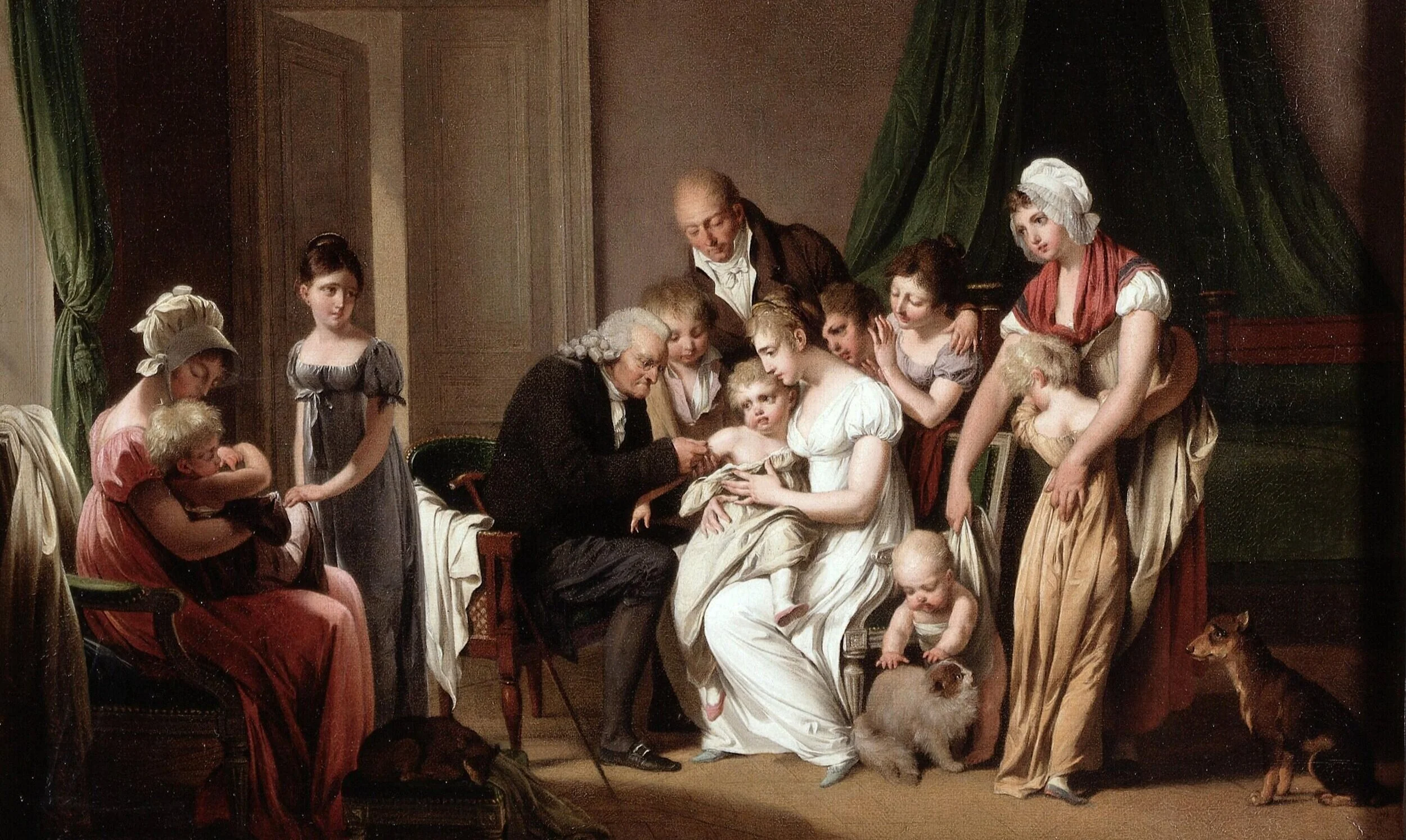Elisabeth Kübler-Ross, the Palliative Care Pioneer
Perhaps best known for her 1969 book “On Death and Dying,” Elisabeth Kübler-Ross sparked a conscientious debate about the process of passing away and the care of the terminally ill. Her well-known model on the "Five Stages of Grief" has become fundamental in relieving and comforting patients with a limited life prognosis. “On Death and Dying” became a publishing phenomenon and continues to contribute to the public discussion on the suffering of the dying, and the importance of palliative interventions.
Kübler-Ross has been recognized as one of the most important minds of the 20th century. A Swiss-American physician, psychiatrist, lecturer, and writer, she was a pioneer in palliative care and dedicated her entire career to the study of death as an experience. Kübler-Ross challenged the traditional clinical approach to death and dying and focused on helping patients and the medical providers accept the inevitability of their passing with dignity and compassion.
Born on July 8, 1926, in Zurich, Switzerland, Kübler-Ross was the eldest in a set of triplet girls. From her father, a successful businessman, she inherited her temper and fascination with nature. From her mother, a pious woman, she learned about love, devotion, and service. At the age of five, Kübler-Ross was hospitalized briefly and witnessed the early and lonely death of a girl with whom she was interned. This event instilled in her a curiosity about how illness and death were handled, and from then on, she dreamed of becoming a doctor and helping to alleviate human suffering.
“Kübler-Ross challenged the traditional clinical approach to death and dying and focused on helping patients and the medical providers accept the inevitability of their passing with dignity and compassion.”
Upon finishing high school in 1942, Kübler-Ross was faced with a harsh reality. Her conservative family did not agree with her desire to study and practice medicine. Additionally, her father wanted his eldest daughter to join him in his company as an accounting secretary. Frustrated, she left home at 16. After months of estrangement, and not without resistance, her father allowed her to become a laboratory technician, a prerequisite for entering medical school.
After World War II, Kübler-Ross took up humanitarian work in France, Poland, and Italy. Still quite young, she helped reconstruct devastated villages as a cook, carpenter, and bricklayer, and she provided medical help to refugees and the wounded. Right there, in the midst of suffering, chaos, and ruin, Kübler-Ross further recognized her desire to pursue a vocation of service.
During a tour of the Majdanek concentration camp in Poland, Kübler-Ross witnessed the evidence of the atrocities the Nazis had committed. But she also discovered a symbol that would stay with her for the rest of her life—that of a butterfly. In the midst of the horrifying place, she found drawings of butterflies covering the barrack walls, along with names and initials. Some were roughly engraved, others more elaborate. She saw these drawings as a message about transformation—about life after death.
Kübler-Ross returned to Switzerland with a new mindset. From then on, the young woman committed herself to her studies and graduated from the University of Zurich in 1957. A year later, she married Emanuel (Manny) Ross, a young American with whom she studied medicine. Almost immediately, the newlyweds decided to embark on their future in the U.S.
Kübler-Ross began her residency in psychiatry at Manhattan State Hospital in New York where she worked with patients suffering from various mental illnesses and had been deemed “hopeless.” She found the conditions at the institution outrageous, particularly the overcrowding and the violent punishments staff used on patients. Against these customs, Kübler-Ross tried to implement some changes to humanize treatment, promoting compassionate and humanitarian service. After two years, many of the patients under her care resumed an autonomous life in society. Her specialization in psychiatry was particularly significant for her later work with the dying. Through her experience with the mentally ill, Kübler-Ross became aware of the importance of sensitive and respectful attention that preserved the patient's dignity.
Around 1965, she began working at the Billings Hospital in Chicago as an assistant professor and psychiatric liaison with the other departments of the institution. She devoted special attention to the study of death as both a personal and clinical experience. Kübler-Ross scrutinized the health guidelines for caring for the dying, carefully evaluated the attitudes of the service providers and their routines and, in general, the hospital stays. She noticed an alarming pattern of thinking among medical professionals: Death was a taboo subject, a symbol of professional failure. Terminally ill patients were often isolated, and their psychological needs received little attention. Little was done to help the patients come to terms with their death in a way that supported their dignity and emotional well-being.
In her work, she opposed isolation or the denial of the death of terminally ill patients. She developed a model of care that confronted death directly and prepared patients to cope with their situation with dignity. During her medical rounds, she talked frankly with the sick, sat at their bedsides, held their hands, and listened to them for hours. Her idea of a "good death" consisted of respecting the autonomy and wishes of each individual.
In mid-1967, Kübler-Ross led a series of innovative seminars on death and dying at Billings Hospital and later at Chicago Lutheran Seminary. Her audiences usually consisted of medical and theological students, chaplains, nurses, and social workers. During these talks, she provided an unprecedented opportunity for dying patients to publicly express their personal and clinical concerns. In terms of medical care, most of the patients were dissatisfied and frustrated by the depersonalized treatment, emotional distancing, insincerity, and lack of empathy from caregivers. For example, they commented on how frustrating and disheartening the concealment of the diagnosis had been and how they resented deception that inhibited them from arranging for a proper farewell. They also criticized the superior attitude of some doctors and the use of technical and complex language that made it difficult to understand their own situation. Thanks to these meetings, Kübler-Ross opened up a genuine and revolutionary discussion with people with a limited life prognosis. She commented, “My goal was to break through the layer of professional denial that prohibited patients from airing their inner-most concerns.” These talks diverged from typical hospital protocol and bridged a gap between terminally ill patients and healthcare professionals.
With her 1969 debut book “On Death and Dying,” her work to help people come to terms with their own mortality or that of their loved ones reached a larger audience. In this publication, Kübler-Ross proposed for the first time a psychological model—called the “Five Stages of Grief”—that explained the phases of adaptation experienced by the dying as they came to accept their passing. From her perspective, the grieving process should be seen as a natural and adaptive response that usually began with the prognosis of death and completed once the patient became aware of the irreversibility of his or her condition, and of the universality of this experience.
Both with her text and with her model, Kübler-Ross left a valuable legacy for facing the last phases of life in an open, serene, and even positive way. The "Five Stages of Grief"—denial, anger, bargaining, depression, and acceptance—soon became of collective and international interest. Beyond academics and health professionals, Kübler-Ross's work had a decisive influence on the general public, especially among the terminally ill and their families. Her conscientious, close, and accessible research helped to overcome misinformation, to understand the reality of patients, and to unravel the taboos related to the act of dying.
“Kübler-Ross did not deny that death was difficult for all involved, but her research and the tools she created established practices that made the process better understood and showed that compassion should be part of every aspect of medical care.”
“On Death and Dying” has served as a reference and example over time for managing grief and alleviating the psychological suffering that occurs when approaching the end of one's life. In a way, Kübler-Ross's work provoked a popular outcry in favor of dignified and compassionate care for the terminally ill and consolidated her as a pioneer of palliative care.
Beginning in the 1970s, Kübler-Ross traveled around the world and helped establish more than 50 hospices. She wrote over 20 books on understanding the process of dying and the importance of living well. Over her life, she taught more than 125,000 students in her courses and was integral in raising awareness about the process and acceptance of a dignified death. On August 24, 2004, Kübler-Ross's weary heart stopped beating, and three years after her death, in 2007, she was inducted into the National Women's Hall of Fame.
Elisabeth Kübler-Ross' life had been preparing her for a career dedicated to understanding death as an experience. Her rebellious nature as a teenager longing to attend medical school pushed her to later rebel against the prevailing clinical, cold treatment of the terminally ill. The butterflies she saw drawn in the Majdanek concentration camp as a young woman—and their message that death need not be a final end—stayed with her as she reshaped the world of palliative care. Her humanitarian work in Europe and at the mental health facility in New York served as a foundation for her nuanced model about acceptance for terminally ill patients and provided the sensitivity needed to make death the focus of her career.
Kübler-Ross did not deny that death was difficult for all involved, but her research and the tools she created established practices that made the process better understood and showed that compassion should be part of every aspect of medical care. She recognized that death was not a failure and should not be treated as such. By bringing the voices of actual patients into the conversation about death, Kübler-Ross solidified her place as a pioneer in palliative care. Her legacy remains one that is rooted in compassion and dignity.
Image credit: Satarupa gopala or Large White Flat butterfly, 19 November, 2020 (Wikimedia Commons | CC BY-SAW 4.0)






